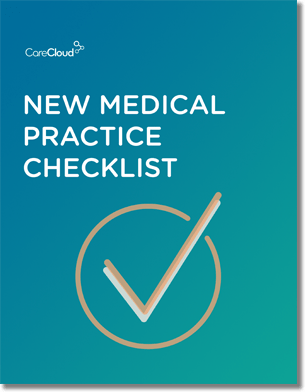Health IT evangelists often dismiss physicians as technophobes, claiming their aversion to EHRs results from a fear of adopting technology among doctors.
However, the use of robots during surgeries, MRI technology, and even the surge in popularity of higher-level technological devices for personal use among physicians suggests otherwise.
Why, then, are some physicians so opposed to EHR adoption? In many cases, interfaces are sloppy and not user-friendly, and consumer devices like Android and Apple gadgets have upped the ante by featuring operating systems that are equally usable and beautiful.
Below we outline reasons why some EHR interfaces are so difficult for doctors to adopt.
EHR Shortcomings
Multitasking
Many EHR interfaces are clunky and get in the way. The system may lack an effective enough design to enable multitasking, which prevents the physician from juggling simultaneous tasks like responding to one patient’s concerns while writing prescriptions for others.
Old-Fashioned
No physician wants to work with an antiquated, old-fashioned system. Many EHR user interfaces were developed years ago, before today’s more simplified and sophisticated interface tools became widespread.
Physicians Have Needs
Many EHRs have a hard time understanding a physician’s needs. Although a number of EHR developers have consultants and staff with medical and nursing degrees, they’re not spending enough ‘elbow-to-elbow’ time with practicing physicians in the field.
Customization Issues
Most EHRs allow for certain fields to be customized. For instance, your medical practice may accommodate individual users with customized templates. However, there are many occasions in which a vendor offers an upgrade to improve usability that won’t accommodate the previously customized fields.
Competitor Information
Unlike the iPhone versus Android battle, EHR vendors often place contractual limitations on customers, preventing them from sharing details of the vendor’s EHR. It’s understandable for vendors to be protective over their intellectual property, but such nondisclosure agreements prevent industry-wide improvements to EHR user-friendliness.
What Makes an EHR Usable?
Physician Dr. Juan Reyes, the in-house physician at CareCloud, defines EHR usability according to three standards.
“Simplicity, efficiency, and design,” said Dr. Reyes. “Simplicity is about having an intuitive process that allows the physician to use the system without a long learning process. Efficiency is the ability to capture all the data required to manage the patient’s condition and maximize the chances of a good outcome while speeding workflow and increasing productivity.”
Dr. Reyes continued: “And a beautiful design or user interface may sound like a superficial thing when describing usability, but at the end of the day, the doctor has to spend a lot of time using an EHR. An outdated, boring design could affect usability in the long run.”
Outlining the shortcomings of some EHRs puts into question what EHR usability really means. The issue of design has become increasingly more important, seeing as poorly thought out EHRs lead to clinician inefficiency and potential safety issues.
“An efficient EHR documents a clinical encounter and captures all the data required to provide the best outcome for the patient with minimum time and effort,” said Dr. Reyes. “The system’s goal should be to provide value and improve outcomes.”
What do you look for when demoing EHRs for your practice?

Do you know what you need when setting up a new medical practice?



